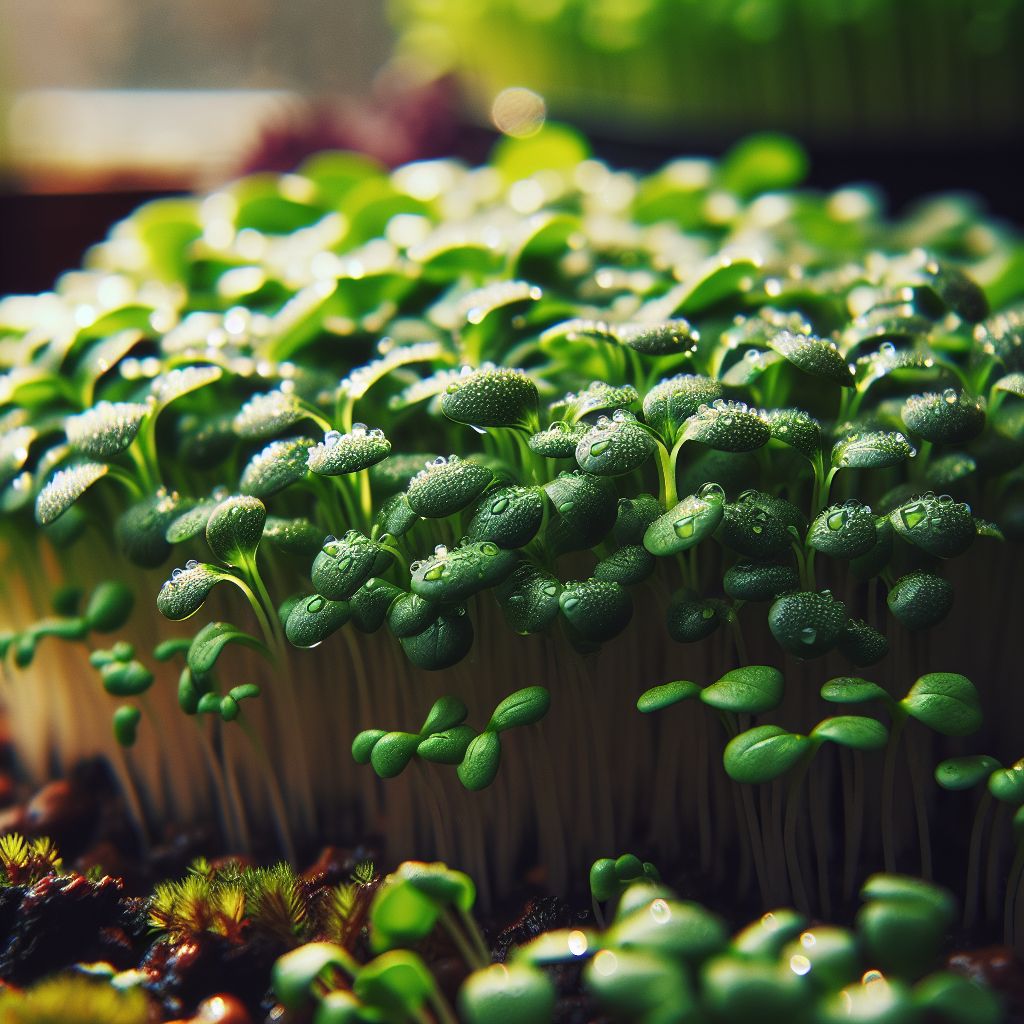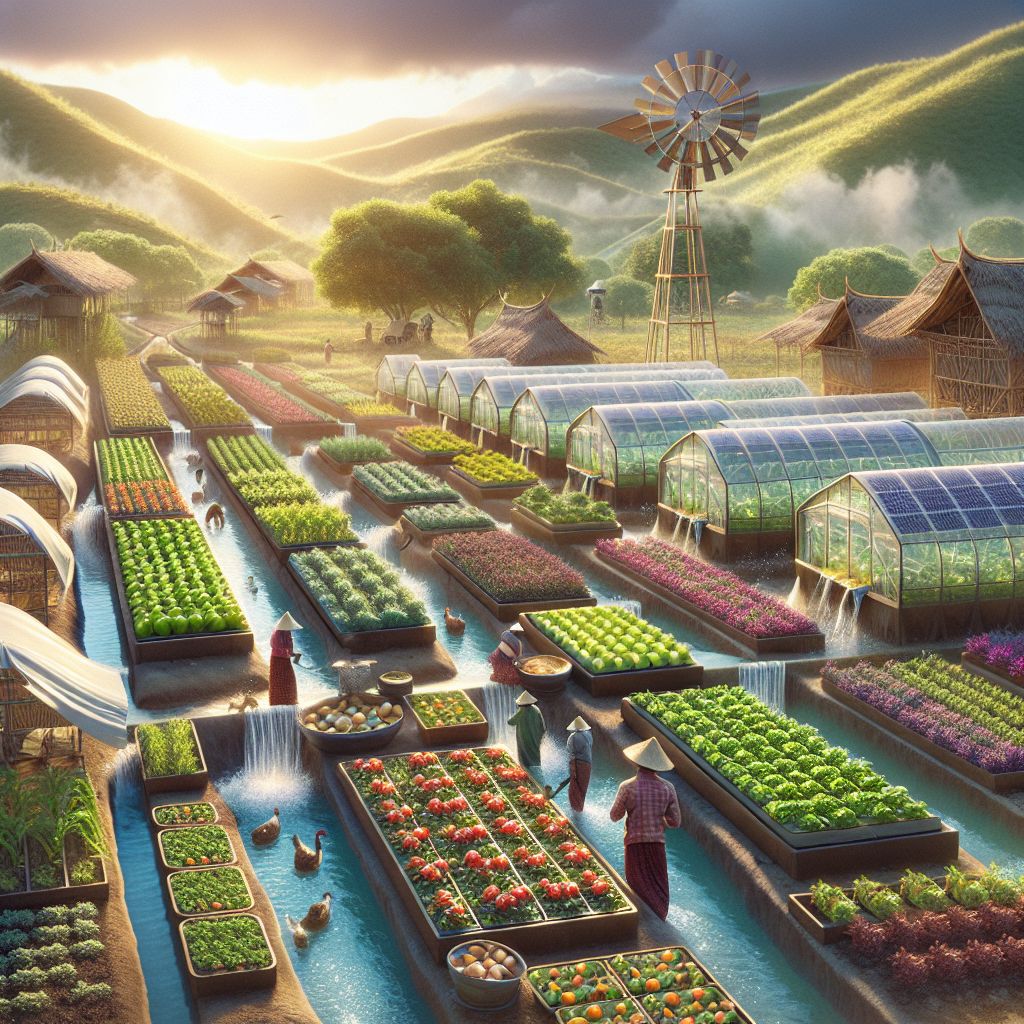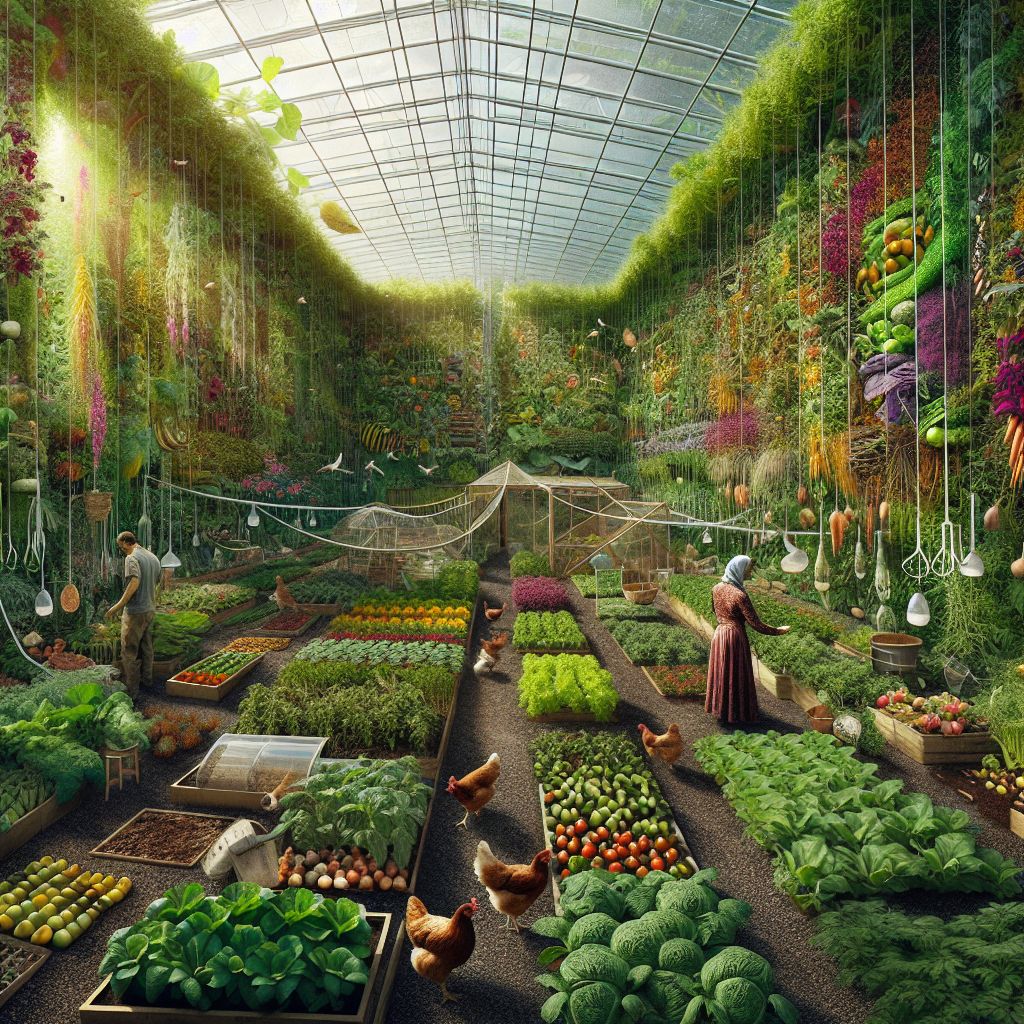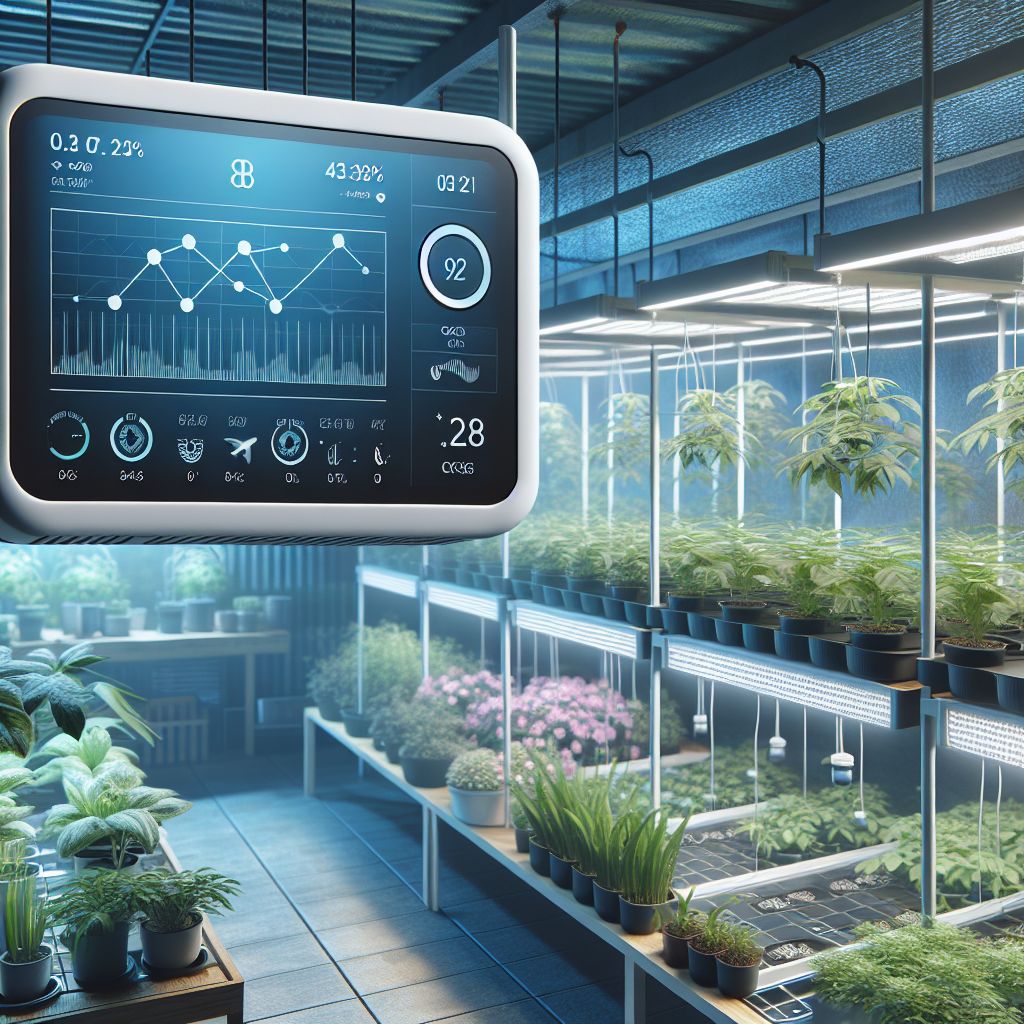Key Takeaways
-
Vertical farming optimizes space and resources for growing microgreens, making it a sustainable agriculture practice.
-
Microgreens thrive under specific light conditions, requiring a balance of light intensity, spectrum, and duration.
-
LED lights are generally more energy-efficient and better suited for microgreens compared to fluorescent lights.
-
The optimal light intensity for microgreens is between 20-40 watts per square foot, with a color temperature of 4600K-6500K.
-
Providing microgreens with 12-16 hours of light per day can lead to robust growth and higher yields.
Shining a Light on Vertical Farming
Let’s talk about growing plants up in the air! Well, not literally floating, but almost. It’s called vertical farming, and it’s like building a plant skyscraper. Instead of spreading out, we stack the plants up high. This way, we can grow a lot more in a tiny space, and that’s super cool for places that don’t have a lot of land to spare. But, like all living things, plants need light to grow, and that’s where things get interesting in vertical farms.
What is Vertical Farming?
Imagine a bookshelf, but instead of books, each shelf is full of leafy greens and herbs. That’s vertical farming. It’s a smart way to grow food in layers, one on top of the other. This method is not just neat, it’s a game-changer for growing food in cities or areas where there’s not much room for traditional farming. Plus, it’s protected from the weather, so plants can grow all year round.
Vertical farming isn’t just about stacking plants, though. It’s about creating the perfect environment for them to flourish. We control the temperature, the water, and most importantly, the light. Because without the right light, our little green friends won’t grow very well.
Now, let’s dig into why light is so important and how we can use it to grow the best microgreens up in our vertical farms.
Benefits of Growing Microgreens Vertically
Why grow microgreens up in the air? Well, for starters, it’s super efficient. Microgreens are tiny plants packed with flavor and nutrients, and they don’t need much room to grow. By going vertical, we can produce a lot more in a smaller space. This is great for growing food close to where people live, cutting down on transport and keeping the greens super fresh.
But there’s more! Growing vertically also means we can control pests easier, use less water, and forget about the weather messing with our plants. All this makes vertical farming a top-notch choice for growing microgreens sustainably.
Sowing the Seeds of Success
Before we dive into the nitty-gritty of lights, let’s get a quick refresher on what microgreens are. They’re baby plants, just a few weeks old, but don’t let their size fool you. They’re like the superheroes of the plant world, full of vitamins, minerals, and flavor. Chefs love them, and so do health buffs. Plus, they’re super quick to grow, which makes them perfect for vertical farming.
Understanding Microgreens
Microgreens are the seedlings of veggies and herbs, harvested just after the first leaves have developed. They’re not just any baby plants, they’re the cream of the crop, chosen for their taste, color, and nutrient content. Think of them as the miniature versions of salads, kale, radishes, and more.
But, even superheroes have their kryptonite. For microgreens, it’s all about getting the right light. Too little, and they’ll be weak and leggy. Too much, and they might get burned. It’s all about finding that sweet spot.

Life Under Lights: The Role of Artificial Lighting
Since we’re growing indoors, we can’t rely on the sun to do all the work. We need artificial lights. But not just any light bulb will do. We need lights that mimic the sun’s magic, giving our microgreens the energy they need to grow strong and tasty.
Artificial lighting is like a sun for indoor plants. It lets us grow food anywhere, anytime. Whether it’s a dark basement or a tall building, with the right lights, we can turn any space into a microgreen paradise.
And that’s just the beginning. In the next sections, we’ll explore how to choose the right lights, set them up for success, and make sure our microgreens are getting all the light they need to be the best they can be.
Color Temperature and Light Quality
Let’s shine a light on color temperature and quality. Think of color temperature like the mood lighting of plant growth. It’s measured in Kelvins (K), and it affects how your microgreens grow. For our little greens, we’re aiming for a daylight feel, something between 4600K and 6500K. This range is the sweet spot that mimics the midday sun and provides a balanced spectrum for strong and healthy growth.
But why does light quality matter? Well, plants have a special recipe for photosynthesis, and just like baking a cake, you need the right ingredients. The light spectrum is one of those ingredients. Get it right, and you’ll have microgreens that are not only healthy but also vibrant in color and rich in nutrients.
Guiding Your Green Thumb
Now, for the part where we get our hands dirty – figuratively, of course. We’re going to guide you through setting up your vertical farm’s lighting system. Remember, every plant has its own light preference, and microgreens are no exception. They love light that’s bright but not too intense, like a sunny day with a few clouds.
For example, if you’re growing red amaranth, you’ll notice they develop a deeper red under cooler, blue-spectrum light. On the other hand, mustard greens might prefer a bit more warmth, leaning towards the red spectrum for optimal growth.
It’s all about balance. You don’t want to overwhelm your plants with too much of one type of light. Think of it as a plant’s diet – variety is key. And just like us, they need their rest too, so don’t leave the lights on all night. They need their beauty sleep to process all that light they soaked up during the day.
Nailing Down the Numbers: Optimal Light Intensity
Let’s talk numbers. Optimal light intensity for microgreens falls between 20-40 watts per square foot. This is the power your lights need to have to make sure your greens grow up strong. But it’s not just about power. it’s also about how you use it. Too close and you might scorch your greens, too far and they might stretch out, reaching for more light.
Light Cycles: Duration and Timing
Timing is everything. Microgreens need about 12-16 hours of light each day. It’s like their workday, and then they need the night off. This cycle helps them grow at a steady pace. But remember, they’re living things, so you might need to adjust the timing based on how they look and grow. If they’re stretching too tall, they might be telling you they want more light. Listen to your plants – they’re pretty good at giving hints.
A Closer Look at Light Sources
When it comes to lighting, not all bulbs are created equal. There are a bunch of different types, but let’s focus on the two big ones: LEDs and fluorescents. These are the go-to for most indoor growers, and for good reason. They’re efficient, they last a long time, and they’re good at what they do – helping plants grow.

LEDs, or Light Emitting Diodes, are the new kids on the block. They’re energy-efficient, they don’t get too hot, and you can get them in all sorts of colors. This means you can customize your light recipe to match exactly what your microgreens crave.
Fluorescents, on the other hand, are the old faithful. They’ve been around for a while and are great for general growth. They’re not as efficient as LEDs, but they’re a solid choice if you’re just getting started or on a tight budget.
LEDs vs. Fluorescent: A Comparative Glimpse
So, which is better? LEDs or fluorescents? Let’s break it down:
|
LED Lights |
Fluorescent Lights |
|---|---|
|
More energy-efficient |
Less energy-efficient |
|
Longer lifespan |
Shorter lifespan |
|
Customizable spectrum |
Fixed spectrum |
|
Higher upfront cost |
Lower upfront cost |
|
Cooler running temperature |
Can produce more heat |
In the end, LEDs usually come out on top, especially for vertical farms where space and efficiency are key. But the best choice for you depends on your setup, your budget, and your goals. Try starting with what you can afford and upgrade as you grow.
Position and Proximity: How to Set Up Your Lights
Setting up your lights is like arranging furniture – it has to be just right. You want your lights close enough to hug your plants with light but not so close that they get a sunburn. A good rule of thumb is to start with your lights about 12-18 inches above your microgreens and adjust from there.
Keep an eye on how your greens grow. If they start reaching up, they might need the light a bit closer. If they’re looking a bit pale or scorched, give them some breathing room. It’s all about watching and learning. Plants will tell you what they need if you pay attention.
Harvesting Your Hard Work
After all that care and attention, it’s time for the best part – harvesting! When your microgreens are tall, vibrant, and full of life, they’re ready to be picked. This is usually a couple of weeks after planting, depending on what you’re growing. The joy of plucking those tiny greens is like finding treasure in your very own indoor garden.
Signs Your Microgreens Are Flourishing
You’ll know your microgreens are happy when they’re standing tall, sporting a bright color, and looking fresh as a daisy. They should be uniform in size and not too leggy. If they’re leaning or stretching too much, they might be telling you they need more light or that the light needs to be closer.
Remember, growing microgreens is a bit of an art and a bit of a science. It takes practice, patience, and a little bit of love. But with the right light, you’ll be a microgreen master in no time.
Most importantly, enjoy the process. There’s something magical about growing food, especially when you’re doing it in a way that’s good for the planet. So, keep learning, keep growing, and keep shining that light on your vertical farm.
When you’ve given your microgreens the optimal light, water, and nutrients, you’re bound to see success. But sometimes, challenges arise, especially when it comes to lighting. If your greens are looking a little sad, it might be a light issue. Maybe they’re not getting enough, or perhaps they’re getting too much. If they’re pale, they might be craving more light. If they’re crispy or bleached, they might be too close to the lights. The solution? Adjust the distance and duration of your lighting. It’s a bit of trial and error, but you’ll get the hang of it.
Common Light-Related Challenges and Solutions
Lighting issues can sneak up on you, but with a watchful eye, they can be managed. If your microgreens are stretching, they’re reaching for more light – move your lights closer. Yellowing leaves? It could be too much light, so dial it back a bit. And if your greens are growing slowly, they might need a bit more light intensity. Keep a log of your adjustments, it’ll be your guide to the perfect lighting setup.
Frequently Asked Questions (FAQ)
Got questions? You’re not alone. Here are some common queries about lighting for vertical farming, answered to help you grow like a pro.
Can microgreens grow with natural light only?
Yes, microgreens can grow with just natural light if it’s bright enough. A sunny windowsill can work wonders. But for consistent growth, especially in vertical farming, artificial lights give you control over the intensity and duration, no matter the weather or season.
How do you calculate the wattage needed for a vertical farm setup?
To calculate the wattage for your setup, measure your growing area in square feet and multiply by the optimal light intensity, which is between 20-40 watts per square foot. For example, a 10 square foot area would need between 200 and 400 watts of light.
Is it better to use LED or fluorescent lighting for growing microgreens?
LEDs are generally the better choice for microgreens. They’re more energy-efficient, have a longer lifespan, and provide a customizable light spectrum. Fluorescents can work too, but they’re less efficient and offer a fixed light spectrum.
What happens if microgreens receive too little or too much light?
If microgreens don’t get enough light, they’ll grow tall and thin, trying to reach for more light. This makes them weak and less flavorful. Too much light can burn them, causing leaves to bleach or turn crispy. Balance is key.
Can the color spectrum of light affect the growth of microgreens?
Absolutely. The color spectrum can influence not just growth but also the color, taste, and nutrient content of microgreens. Different plants respond to different spectrums, so it’s worth experimenting to see what works best for your greens. For more in-depth information, check out this guide on microgreens cultivation.
In conclusion, vertical farming and the right lighting can create the perfect conditions for growing nutritious and delicious microgreens. By understanding the role of light intensity, spectrum, and duration, you can optimize your vertical farm to produce bountiful harvests. Remember, the key to success lies in finding the right balance and paying close attention to the needs of your plants. Happy farming!





